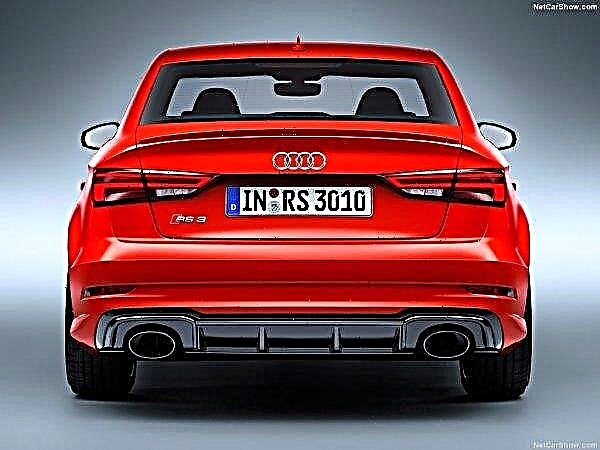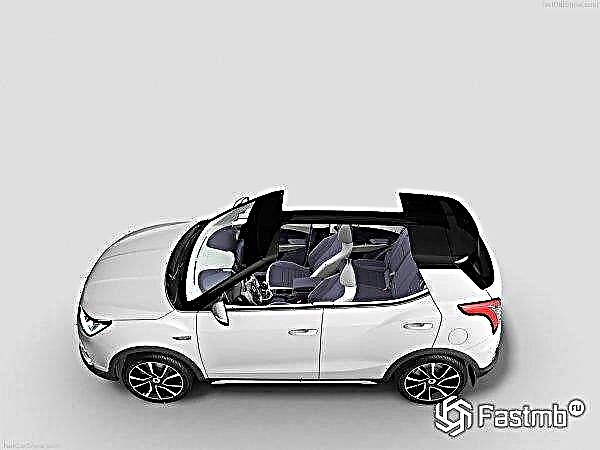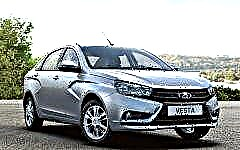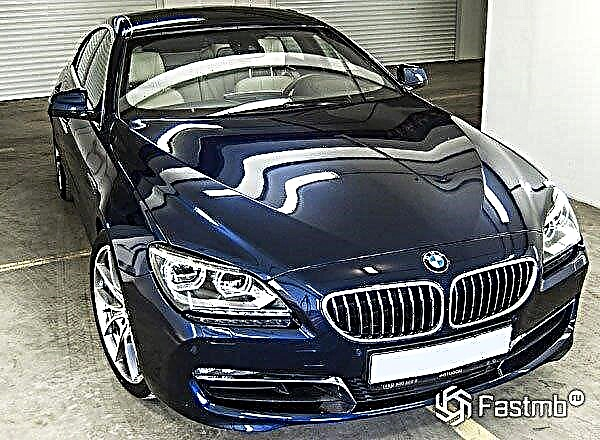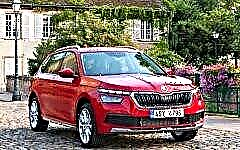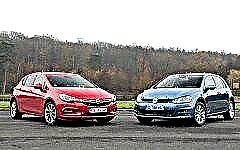

The content of the article:
- Opel Astra and VW Golf appearance and safety
- Suspension and transmission quality
- Comparison of engines
- Advantages, disadvantages and typical breakdowns
There was a time when the Volkswagen Golf was undoubtedly the leader in its car segment, while its competitors could only imitate and strive for excellence.
But everything is changing, and the situation in the automotive market has changed. New versions of Volkswagen models are no longer the standard of "German quality", and competitors in the person of Opel Astra are already stepping on their heels with might and main.
Choosing a car sometimes resembles choosing a companion for living together, no matter how long it lasts, a year or many years. Which car to prefer - one that is beautiful, smart, has excellent manners, but its demands are high? Or modest, quiet, but reliable? Let's compare the Opel Astra and the VW Golf.
Opel Astra and VW Golf appearance and safety

Cars are generally equivalent, but each has its own characteristics. The Golf looks neater and more beautiful, and the fit of the elements of this car has been made more accurate.
The peculiarity of the door design in a number of models of the "age range" made it possible to remove the outer skin for repairing the body, making it possible to quickly eliminate the traces of strong blows in an accident.
True, such road repairs, but the car is always "like new". In new models, doors on Volkswagen are placed lower than usual, without innovative additions.

Crash tests of both cars allowed them to give them 5 points for safety, but in a number of nuances the Opel Astra is insignificantly, but ahead of the Volkswagen Golf.
Both vehicles are protected against the adverse effects of corrosion. For the latest Astra models, the manufacturer provides a 12-year warranty that the body will not develop perforating corrosion during this period of time. The weak point, however, is the metal on the tailgate, covered with a chrome strip.
In the G version of the Astra, all cavities are treated with an anti-corrosion coating from the inside. Seams that have been exposed to welding are carefully sealed.
If the car does not suffer in severe accidents during its service, then the life of the hull is 25 years.
Golf also provides a 12-year body warranty against corrosion perforation. The paintwork is covered by a three-year warranty. The guarantees for the protection of the body against corrosion are real, there are no problems in the absence of strong, traumatic effects in an accident with it.
The very first copies of the Golf suffer from peeling paint, door locks and window lifters can also "glitch". Sometimes water can get into the lights from behind, but the sealant easily solves this problem.
At Volkswagen, rusty spots appear on the doors, along the perimeter of windows, suffer from corrosion and pillars in the area of the door seal.
The general trend in interior design is similar: smooth lines, dark plastic tones, simple ergonomics. But the quality of the interior decoration differs.
The interior of the VW Golf is very decent and seems large in comparison with other small cars. The fit of the panels and the quality of the finishing materials are excellent.
On a cursory inspection, the interior of the Golf seems almost perfect, but second and third glances reveal flaws: excellent build and quality materials lose their appeal over time. The rubber covering of door handles and buttons for electric lifters begins to peel off, rubber dies from time to time. And there is not enough space for passengers sitting in the back.
Astra looks smaller and more modest, after the Golf salon the trim loses it. There is no zest, everything is boring and condo, finishing materials are also inexpensive. But the rear seat is much more comfortable, and the boot size is 30 liters larger than that of the competitor.
However, after years of operation, the Astra interior becomes sounding-creaky. The dashboard on the Astra is made in the early versions of the budget and is prone to creak for no reason. In the Elegance / Cosmo / Sport versions, this flaw is corrected, the quality is already much higher.
In terms of prices on the secondary market, an Astra with a good filling is still worth less than an unpretentious Golf.
Suspension and transmission quality of Opel Astra and VW Golf

Both vehicles are equipped with independent front suspension and semi-independent rear. Ball joints, silent blocks, numerous consumables for the quality of domestic roads serve up to 100,000 kilometers.
True, for a Golf, the first suspension repair may happen later, at 120,000 kilometers. In Astra, the weak point of the suspension is the stabilizer bushings, wear occurs at about 30,000 kilometers.
The Astra's suspension is simple. The front axle was made according to MacPherson, and a torsion beam was installed in the back. The front levers allow you to individually change the elements of both ball and silent blocks. The rear beam is strong and reliable, and breakdowns are relatively rare.
The vehicle's ground clearance is an absolute advantage on Russian roads, which, after frosts and the subsequent melting of snow, are "now a pit, now a ditch." Those drivers who have to travel a lot on poorly paved roads will like the endurance of the suspension and its simplicity.
The connecting elements of the suspension, as well as the ball ones, do not last too long, but they change easily and quickly, and the price for them is low. The exception to the rule is the sports Astra models, equipped with an adjustable shock absorber system. It will not work to replace them with "something", and the original spare parts "bite" at cost. But this is a feature of only sports versions - for all other car owners, this problem is irrelevant.
The Golf's suspension is reasonably well made and doesn't pose much of a problem. A multi-link suspension is installed on the rear axle. Structurally, it is strong and durable, however, the older the version of the machine, the more likely it is that there will be a need to repair it. Putting the suspension in order costs an average of about 7 thousand rubles.
Steering versions differ for compared cars. The Golf has an electric power steering, while the Astra has hydraulics. Problems, if any, result in an amount equal to about 10 thousand rubles.
Both car models have versions of both a manual transmission and an automatic. "Mechanics" in the secondary car market is more popular.
Any transmission is distinguished by its endurance and good resource. After passing 100,000 kilometers, a backlash in neutral gear and difficult shifting of other gears is possible. The problem is solved by rebuilding or replacing the stage.
Comparison of Opel Astra and VW Golf engines

The Golf range of motors is impressive with its variety. In general, the engines are made according to modern technologies, requiring, in this regard, expensive diagnostics, although they are distinguished by their durability. In service, they are also not cheap.
The TSI and FSI markings denote a system based on direct petrol injection. For motorists who are thinking about saving fuel and, as a result, about reducing the cost of operating the vehicle there are three types of engine to pay attention to:
- gasoline "unkillable" 1.6-liter engine with 8 valves;
- a diesel engine of 1.9 liters (the only drawback is loud work);
- a 1.4-liter gasoline engine with 16 valves (the engine is the simplest, but problem-free).
Engines that have been proven over years of operation turn out to be much more interesting than later versions. The traditional 1.6-liter gasoline engine and the 1.9-liter diesel engine have proven their best. They are reliable and flawless in their work.
It is better not to consider the two-liter TDI PD engine modification - in used versions of cars, it is usually very worn out.

Almost the entire Astra line of motors deserves attention:
- A good choice is the Fiata turbo diesel engine (1.9 CDTI). It is economical with good power and reliability.This motor characterizes the Astra at its best - high-torque and not particularly loud.
- The next in terms of reliability, but inspiring confidence among car owners, is the 1.7 CDTI engine from Isuzu.
- The third variant of the small motor was developed for Fiat. The low-power 1.3 CDTI "eats" quite a bit of fuel, but the Astra is much heavier in weight than the Corsa, and it will not work especially briskly with it.
It is worth remembering that Astra engines are very sensitive to fuel quality: low-quality gasoline leads to failure of the ignition unit and leads to the formation of carbon deposits on the valves.
Most Opel diesel vehicles use a particulate filter during operation. The presence of such a filter can be determined visually. It is enough to find a sticker in the cabin near the front passenger seat pillar and read the numbers.
If the sticker in the character line displays 0.5 - the filter is provided for this model, if 1.2 or higher - it is absent. True, drivers sometimes remove the filter on their own if the car becomes unstable because of it.
Opel Astra engines have proven themselves well in terms of reliability during operation, but their characteristic drawbacks are significant fuel consumption, medium-strength power and oil burner.
Common engine breakdowns are associated with an EGR gas recirculation valve, choke valves and oil leakage. Opel itself, in newer versions of Astra, has ceased to equip cars with hydraulic valve lifters in strong engine versions of 1.6 and 1.8 liters. You can check if the car has hydraulic lifters by decoding the VIN number.
Astra offers users a wide range of powertrains, but just a couple of good engines installed on the Golf are also enough for a calm and confident ride.
Advantages, disadvantages and typical breakdowns of the Opel Astra and VW Golf

Pros of Golf:
- operational reliability;
- insignificant loss of value several years after purchase;
- any spare parts are always available.
Cons of Golf:
- significant cost when servicing FSI / TSI / 2.0 TDI PD models;
- poor standard equipment.
Golf Problems:
- the heads of the block and injectors floundering on the two-liter TDI engine;
- the control system located in the turbochargers is subject to wear;
- malfunctions occur on models with a 1.4 TSI engine in the timing chain, as well as the coolant pump;
- the valve of the exhaust gas recirculation system is malfunctioning;
- the dual-mass flywheel wears out quickly.
Pros of Astra:
- the model range is diverse - there are many different versions on the market, there is plenty to choose from;
- low prices;
- wide range of motors;
- availability of spare parts.
Cons of Astra:
- Gasoline engines are characterized by an average degree of reliability;
- Anti-corrosion protection is slightly inferior (according to statistics) to Golf;
- On the market, it is possible to run into machines used in enterprises.
Astra problems:
- Rapid wear of the intake manifold;
- Breakdowns in the EGR system;
- Failure of the CIM module in the steering column space;
- Oil engine for 1.6 and 1.8 liters engines.
With comparatively similar characteristics, the Astra is cheaper. But if we consider the quality of engine performance and its durability, then for the purchase it is better to consider the more expensive Golf, equipped with a simple and extremely reliable 1.6-liter 8-valve gasoline engine.
For fans of diesel cars, the most interesting may be the Astra 1.9 CDTI, which does not have a particulate filter. When compared to a similar Golf, the car will have better fit and condition.
The Volkswagen Golf is head and shoulders above the Opel Astra in terms of technical excellence. It is ideal for those who do not need a roomy car and who do not like frequent visits to the service station. Golf owners visit the workshops less often, although repair parts are more expensive.
Due to the combination of many small factors and nuances, it is Astra that is preferable for those car owners who often and a lot use the trunk, travel with passengers in the back seat and calmly relate to low-quality interior trim. In addition, it costs less, and its maintenance and repair costs are also lower.

